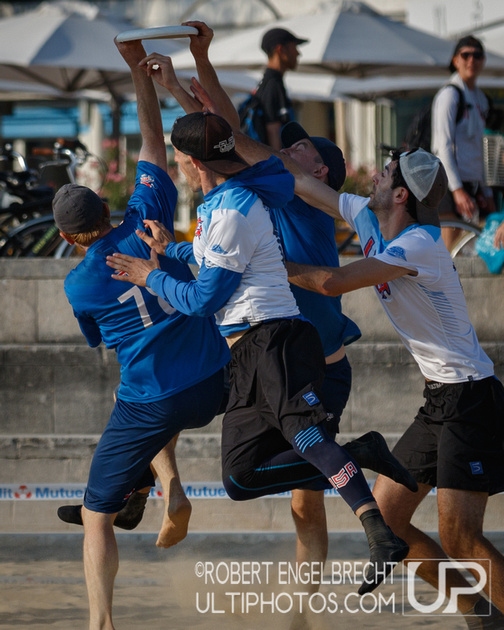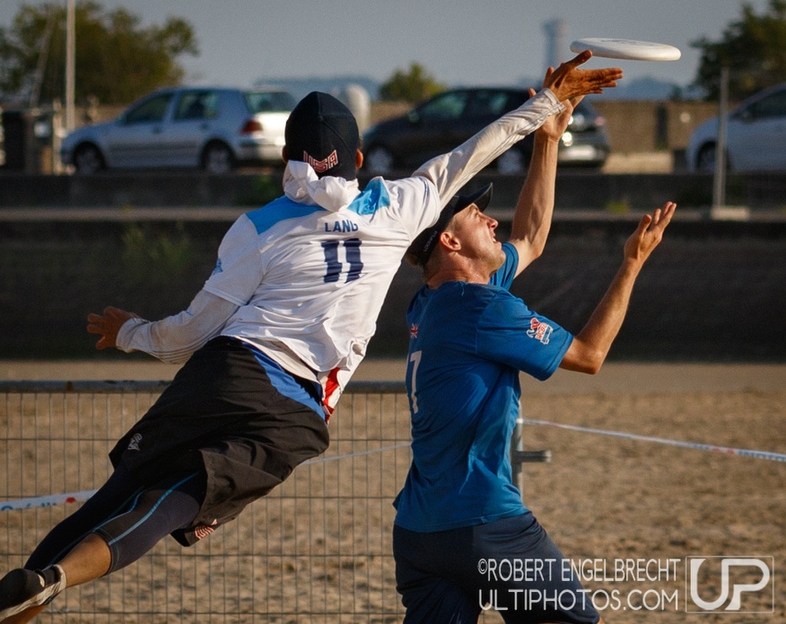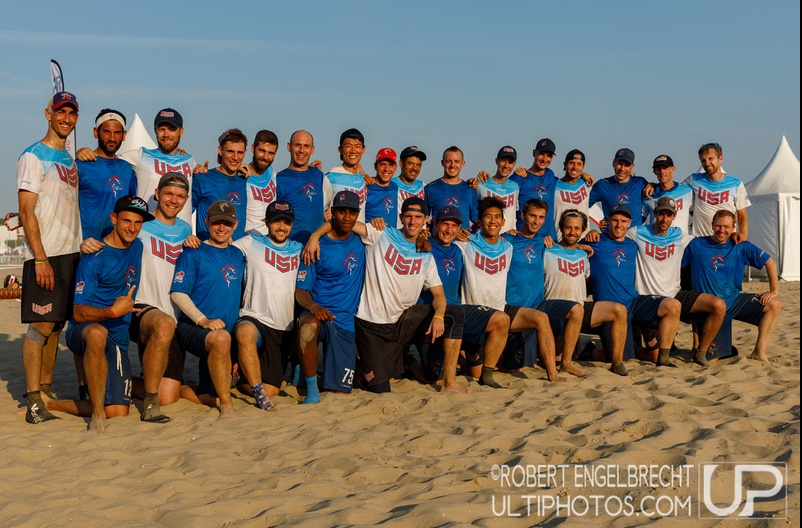Clapham v Chevron – Analysis of dominant defence leading to a footblock
Transcript:
In this video I’ll look at Clapham’s intense defence which results in a turnover against Chevron at a critical point in the Tour 3 2017 Final.
First look at Justin Foord on the mark, forcing away from the camera. As Ben Burak catches the disc, Foord is moving quickly to cover the break side. As soon as Burak plants his left foot and shifts his balance to his right, Foord mirrors. Burak then throws a shoulder fake, which Foord moves slightly to the right to cover, staying balanced enough to be able to get a foot ready to cover the inside-out flick threat. He keeps his balance and positioning, so Burak doesn’t even pivot for the around backhand as he knows Foord is still covering it.
Burak then threatens the inside-out flick again, and note how it’s Justin’s right foot that moves first. This puts him in a much better position to be able to stop the throw, and means that his resulting balance is automatically aimed towards recovering his position to stop the around backhand break. Watch again how closely his footwork matches that of Burak’s.
From this angle, notice how Foord doesn’t kick his foot out for the first flick fake – Burak has wound up for the throw but does not pump the fake realistically, so Foord essentially winds up for the footblock, does not commit to it. This is a masterclass in appropriate reactions to a thrower’s movements – he respects and matches each move, without overcommitting at any point.
Now let’s have a quick look at Ashley Yeo, #20 for Clapham. He makes a decision to dial back his coverage of James Mead’s break side cut when he sees Burak is not going to attempt the throw, meaning the short break area of the pitch is no longer an urgent threat. By dialling back at this exact moment, Yeo makes the window behind him smaller, whilst also using his energy efficiently. Note the quick chain of events – Burak pulls out of the throw early, Yeo changes his coverage, and Parsons, #25 for Chevron, pulls out of his cut.
The two Clapham defenders on the far side maintain close coverage, forcing their marks towards the clustered area, denying any easy reset into the space behind them, and also contributing to Parsons’ decision to pull out of his cut. Ben Funk catching the D greatly increased Clapham’s chances of converting the turn, they instantly split the deepest defender and punch it in.
But what could Chevron have done differently?
After working the disc over to the break side, #50 Sam Turner gets open, albeit for a break throw. Burak should put more energy into trying to get the disc to Turner – even if this pass doesn’t happen, the effort would move the force further around to open up the inside-out channel, it would communicate to Turner that the pass wasn’t coming and encourage him to clear the space faster, and it would get his defender committing to stopping the pass, which would potentially open up a deep option to Turner.
This is a very fine point and only a narrow opportunity – at this late stage in the game, the big differences are to do with how the offensive and defensive strategies have adjusted to counter each other, and although Clapham are playing excellently individually, it’s likely a team-wide approach which has exploited the weaknesses in Chevron’s offence.
I hope you enjoyed this video, go to felixultimate.com for more analysis and strategy articles.









